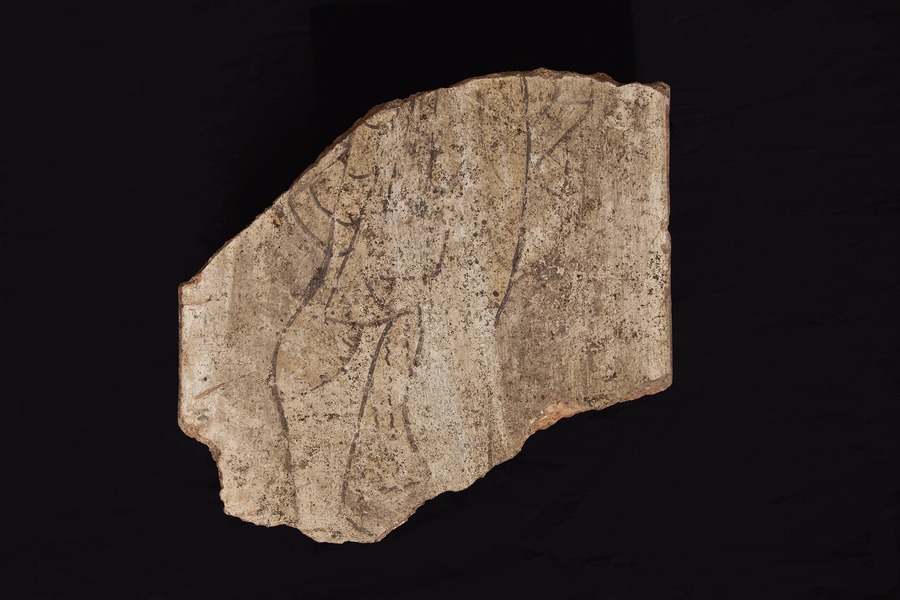Pinax fragment depicting a male figure from waist to ankle
Summary
The pinax depicts a male figure, however, only the legs are preserved.
Description of object
The narrow pinax shows a male figure, however, only the legs are preserved. He is wearing boots and garment of a thin type of fabric. Behind his left thigh, a shield is slightly visible. To the right a indefinable object is visible (part of his arm?). At either edge are two vertical red bands. The shape of the pinax might suggest that it functioned as a revetment plague at one side of an opening, for example a door or a window.
Choice of methods
Visual examination
- Macroscopic
Technical imaging
- UV
- VIL
Sampling
- Cross section
- Scrapings for FT-IR
- XRF
- FT-IR
Visual examination
The pinax is painted in black and brown on a cream white slip.
Bibliography
M. Cristofani (1986), Nuovi dati per la storia urbana di Caere, BdA, 35-36, 1-23
M.A. Rizzo (1994), Nuove lastre dipinte da Cerveteri, in M. Martelli (ed.) Tyrrhenoi philotechnoi, Roma, 52, n. 2.
F. Roncalli (2006), La pittura su lastre fittili a Caere in Guidi, F.G., Bellelli, V. and Trojsi G. (eds.) Il guerriero de Ceri, Roma, 16, no. 9.
J. Christiansen & N. A. Winter (2010), Etruria I. Ny Carlsberg Glyptotek, Copenhagen, 190, cat. no. 85.
C. Brøns (1), S. B. Hedegaard & K. L. Rasmussen (2018), The real thing? Studies of polychromy and Authenticity of Etruscan Pinakes at the Ny Carlsberg Glyptotek. Studi Etruschi LXXIX – MMXIV, 195-223.
- HIN 799
- Architectural element
- 500-480 B.C.E.
- Etruscan
- Terracotta
- Acquired in 1977.
- H. 17 cm.; W. 19.5 cm.; D. 2.6/2.7 cm.



